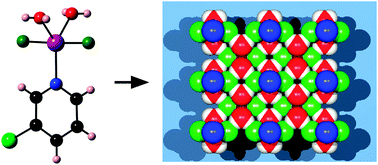Antiferromagnetic ordering through a hydrogen-bonded network in the molecular solid CuF2(H2O)2(3-chloropyridine)†
Abstract
CuF2(H2O)2(3-chloropyridine) possesses a five-coordinate Cu2+ center with a slightly distorted trigonal bypyramidal coordination geometry. Strong intermolecular F⋯H–O hydrogen bonds enable the formation of 2D layers and provide the primary magnetic exchange path that leads to the stabilization of long-range antiferromagnetic (


 Please wait while we load your content...
Please wait while we load your content...